Wood Board
– MDF Boards
– Particle Boards.
– OSB Boards
– Finger Joint Boards.
– Laminate Flooring.
– HPL Boards (High Pressure Laminate)
Description
What is a Wood Board?
A wood board is a flat, thin, rectangular piece of wood or plastic which is used for a particular purpose. Buy wooden boards online. https://www.europepellets.com/product/trapellets/
– MDF Boards (Medium Density Fiberboard)
– Particle Boards.
– OSB Boards (Oriented strand board)
– Finger Joint Boards.
– Laminate Flooring.
– HPL Boards (High Pressure Laminate)
Plywood boards are made of overlapping wood sheets glued perpendicularly and heat pressed. Just as with cross laminated timber (CLT), cross-directional fibers in plywood allow the board to withstand greater stress. Order wood board online.
Plywood’s use is quite varied. It can be used for furniture, floors, ceilings, doors, and countertops among others. It is also compatible with paints and glues of natural sheets or melamine.
These wood chips are then washed to remove lignin and all kinds of impurities, and then they undergo a process of thermo mechanical defibering.
The resulting fibers are mixed with urea-formaldehyde and paraffin and subjected to pressure and heat on metal plates that form them into a board.
The fibers are sorted into different sizes, the finest ones going into the outer faces of the board.The result is a fairly stable and sturdy board, with a fine, even texture, perfect for all sorts of woodworking and furniture projects.
There’s normal and waterproof MDF, the latter being designed for use in humid environments.
They’re usually 244cm long by 122cm wide, although you may find bigger ones. The weight of an 18mm thick MDF board is around 40kg, it’s a pretty heavy material.
Just like with plywood, there are many qualities depending on how it is manufactured, and it takes some experience to tell them apart.
These are the main types of MDF you may find in a carpentry store:1- Hardboard:
It’s not exactly MDF, as it’s high density, rather than medium. As the name suggests, it’s made using higher pressure and temperature compared to regular MDF, yielding a harder board. It has a smooth face and a rough one. Not very thick, suitable for back parts of furniture or drawer bottoms. It’s also used to make flooring and boxes.
2- Waterproof MDF:
18mm thick in this case. Contrary to popular belief, the green dye is not what makes it waterproof; it’s just used to distinguish it from regular MDF. For use indoors in moist conditions.
3- Colored MDF:
In recent years, this kind of colored boards have become more popular. They come in lots of colors. Great for furniture and interior decoration.
4- Normal MDF:
The cheapest and most common MDF, this one is 10mm thick. Only suitable for use indoors in relatively moisture-free conditions.
5- MDF with melamine on both sides:
This one is 5mm thick. Easy to find in many thicknesses and colors. The melamine may also imitate other woods. It can be normal or waterproof.
6- MDF with a beech veneer:
This one is 16mm thick. Other thicknesses are easy to find, with veneers of all kinds of fine woods. It can be normal or waterproof. Ideal for making furniture. Just like with plywood, veneered MDF is thicker; for example, the 18mm one becomes 19mm thick.
7- Post-formed MDF:
When MDF boards are made, the heat presses can have reliefs that create shapes on the sides of the board, like in this one. It’s a piece of plinth with melamine on both sides. Similarly, interior doors and furniture doors are made by covering the board with melamine, PVC or paper.
As you can see, almost all MDF boards come in normal, waterproof and fireproof versions. If possible, it’s best to buy waterproof MDF.
When I needed a veneered board and wanted to avoid spending money on a plywood veneered board, I also used MDF. It’s also what I did with the doors of the multifunction workbench, where I used 16mm thick MDF with a beech veneer, to match the bench top. In general, MDF is much cheaper than plywood.
In all of those instances, the pieces didn’t need to be particularly hard or stable, and weight wasn’t a huge concern.
I most often use thin MDF, 3 or 9mm, with melamine on both sides. It’s a highly versatile material to make router templates and things like that.
Processing MDF Board:
Since it’s a homogenous material without grain, MDF is easy to cut and mill. It produces a lot of dust when doing so, as you can see in the first and second photo, so wearing a mask when processing it is advisable.
Uses of MDF Board:
This is not the type of board I use most in my project, but I have used it when I needed a smooth surface that had to be painted, such as the doors of the kitchen I built a few months ago, or the fronts of the drawers in the open wardrobe in the second image.
One downside of using particleboard is that it is susceptible to discoloration and expansion, mostly if you do not cover it with sealer or paint. Hence, it is not advisable to use it outdoors or in places exposed to too much moisture.
One type of particleboard is the single-layer particleboard, which consists of uniformly sized wood particles pressed together, resulting in a flat and dense board. You can veneer or plastic-laminate this board, but you can’t paint it. Moreover, it is not waterproof, but it is water-resistant. You can use this board for interior applications.
You will also find a three-layer particle board that features large wood particles between two layers of small and dense wood particles. The outer layer comes with a more significant amount of resin than the inner layer. Additionally, this type of particleboard comes with a smooth surface and is perfect for painting.3) Graded-density Particle board:
The graded-density particleboard features a specific layer of coarse wood chips. This layer is then sandwiched by two layers of fine wood particles. You can use this type of particleboard for wooden furniture and making cabinets.
There is also a particle board type that has magnesium-based cement as its bonding agent. Its cement content is around 60%, while 20% of it consists of wooden shavings, chips, and sawdust. The remaining 20% consists of water.
This type of particleboard is resistant to moisture because of its cement content. It is also not susceptible to termites, rotting, and fire. Moreover, you can use this particle board for constructing walls, false ceilings, and coverings. You can also use it to make fire-resistant furniture.
5) Melamine Particle board
You can also buy melamine particleboard, consisting of decor paper infused with melamine affixed to the particle board under high pressure and heat. Its wood particles are bonded using wax emulsion and melamine-urea formaldehyde resin.
Laminated particle board consists of a particle board that has a laminate sheet on its surface. With the addition of the laminate sheet, the particleboard exhibits enhanced aesthetics and added durability.7) Veneered Particle board:
A Particle board with a thin slice of wood veneer affixed to its surface is called a veneered particleboard. You will think that veneered particle boards are similar to a natural wooden board, yet they are more resistant to warping than standard particle boards.
Because particleboard is cheaper than plywood and exhibits certain qualities that you will not find in conventional plywood, it has also continuously gained popularity among woodworkers and wood users. Additionally, it is eco-friendly, being made of wood wastes. You can use particle board as an alternative to plywood or MDF if you want to cut down on your construction expenses. Below are some of the typical applications and usages of particleboards:Building Furniture:
Furniture manufacturers have long been using particleboard in their furniture. They use it in manufacturing offices and residential furnishings. One type of particleboard frequently utilized by manufacturers is the wood veneer particle board because it is durable and fits moist environments. So, you will often find this particle board in bathrooms and kitchen areas. They are used in storage units, countertops, kitchen cabinets, tabletops, dressing units, and wardrobes.On the other hand, you will find ordinary particleboard utilized in interior furniture like beds, storage units, wardrobes, shoe racks, bookshelves, computer tables, and television cabinets. You will also find particleboards being used in mass-produced office furniture.Cabinets:
Although particleboards may not be the go-to material when building cabinets; yet, it is also suitable for building cabinets if you want to save money. The fact is that you can use particle boards as shelves, jambs, bottoms, backs, and bottoms of cabinets.Moreover, you will find the finished particle board even better than that of plywood. You can stain it and finish it with two lacquer coats for optimum finish.Design Routing:
The particle board is characterized by its stable and flat surface and consistent core. As such, it is perfect for routing detailed designs into it. Many manufacturers also prefer it for creating routed panels and cabinet doors that are perfect for insertion into a wood project.Using flute knives, raised panel knives, Roman ogee bits, and even a handheld tool with the router, you can cut designs directly into the particleboard’s surface.When it comes to design, your only limitation is your imagination, given the fact that the particleboard is shapeable enough. Once you’ve cut the designs, you can then paint the doors or panels with enamel paint. https://www.europepellets.com/product-category/firewood/Door’s Core Material:
You can also use particleboards as core materials for flush and solid doors. Most manufactured doors use particleboard, for it offers a smooth and flat surface and can bond easily with the door’s skin. It can also hold screws well. Hence, it is perfect for hinges as compared to MDF.
Flooring:
You will also find particle boards used in flooring material for temporary structures. Moreover, you will also find it used for hardwood floor’s covering as extra protection for hardwood. You can also use the laminated particleboard to add aesthetic value to your flooring.
Chipboard is created by pressing wood debris, such as sawdust and dust, with resin and glue. Over time, this material has given way to other solutions such as the MDF or its nearest replacement, the MDP. It can be finished with paints and varnishes, but they rarely stick, since the surface is not smooth or uniform. The main advantage of this agglomerate is its low cost. Its uses are similar to MDF, but specific types of hardware and connections must be used to obtain a satisfactory result.Like Chipboard, MDP boards are also made of wood particles compressed with synthetic resin and heat pressed, with the difference that the fine particles are deposited on the face of the board and the thickest particles in the core. This distribution allows a better finish, a better adjustability, and more possibilities of application for claddings. It is not very resistant to moisture and may have some imperfections. https://www.europepellets.com/product-category/wood-pellets/The resulting panels are widely used in the production of simple furniture.
OSB boards have a very characteristic aesthetic that has been increasingly incorporated into architectural design. These boards are made of wood chips pressed in perpendicular layers and bonded with resin applied at high pressure and temperature. They have good mechanical strength and rigidity. In addition to their good sound insulation, they have no empty spaces inside them, and no knots or cracks, so they are very uniform. They are also ecological and durable against the outdoors and the action of rain, humidity, wind, and heat. In addition, the boards are fully recyclable. However, since they have a rough surface, it is impossible to apply laminated products onto them.
The main applications of OSB occur in walls and ceilings, floor bases for the application of carpets, wood floors, bricks, cladding and construction sheds, packaging, and furniture structure among others. https://www.europepellets.com/product/pellets-de-madeira/
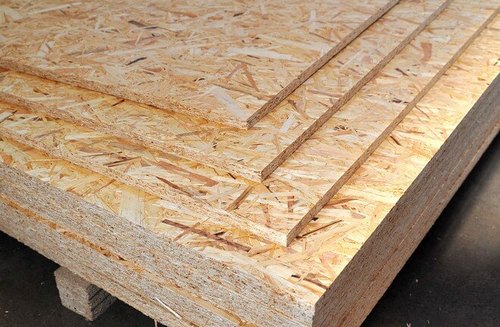
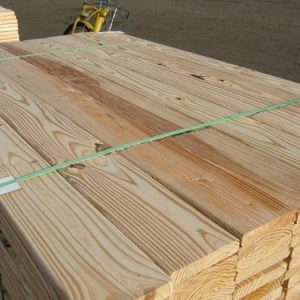
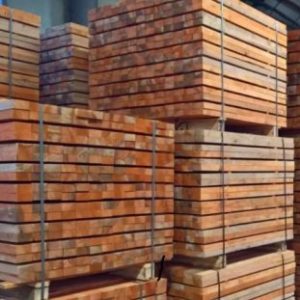
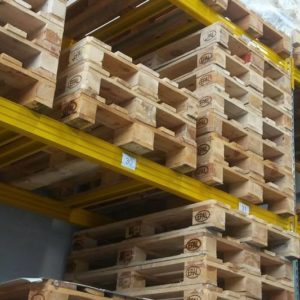
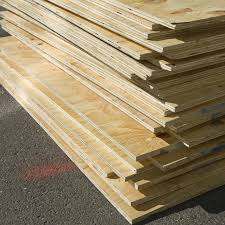
 +380 63 265 7682
+380 63 265 7682 info@europepellets.com
info@europepellets.com
Reviews
There are no reviews yet.